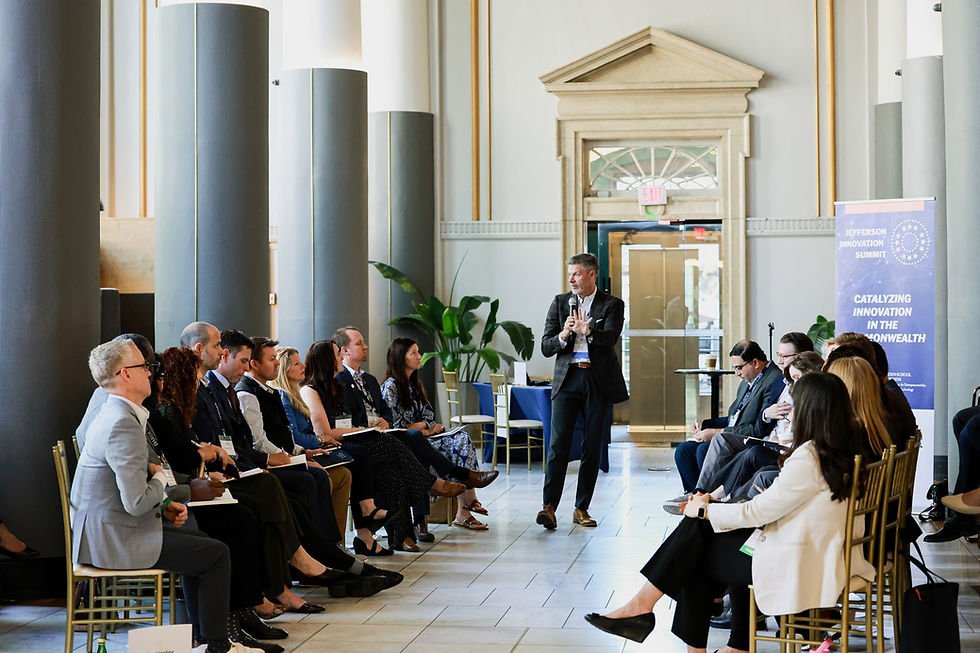Everything You Need to Know about Collaborative Workspaces
- Nov 11, 2017
- 4 min read
by Kaleigh Watson:
Picture your favorite study space from college, all grown up. Subtract the stuffy libraries, keep the coffee, and add? Well, more than you might imagine. Collaborative workspaces are popping up in urban spaces across the country and today’s modern workers are loving them. Tony Bacigalupo of New Work Cities, Matt Busby, director of The Camp House, and Ariel Lev, director at CoLab explained what these spaces are and why they matter during the 2017 Tom Tom Founders Festival Hometown Summit.
What is a collaborative workspace?
Collaborative spaces are a relatively new phenomenon, a “third space” that exists between the traditional home and office spaces. These community nodes serve as a space that’s less than an office but more than the corner coffee shop. For example, Gather based in Richmond, VA offers a full list of amenities to members, from copying, printing, and conference rooms to a game room, gym, and showers. Other programs like Bacigalupo’s New Work Cities aim to build community not only through open, collaborative space but also with programming for members and events like poker nights and holiday parties.
Despite varying levels of amenities, collaborative spaces like these all share a common goal: providing a place for people to work, connect, and collaborate. This potential for bringing people together and sparking ideas is something all three speakers agreed on as paramount to the ethos of any coworking space.
Where did they come from?
Collaborative workspaces are a byproduct of modernity. Technologies like laptops, file sharing, and video conferencing have freed the previously office-bound worker, allowing for a majority of work to be done outside of the cubicle. While this freedom is certainly something to be celebrated, many workers enjoy collaborative spaces for the feel of camaraderie they provide.
How are they beneficial to workers?
These spaces foster an excellent environment for bouncing ideas around and bringing people into contact with one another – essentially sparking connections and innovation. This is what people really want to be a part of – not so much the space itself but the unique, collaborative climate. The consensus from our speakers reinforces the fact that these collaborative spaces aren’t filling a need for a place to work, but for the sense of community belonging they create.
Matt Busby, speaking of The Camp House based in Chattanooga, TN explains that people, “come for meetings, not to do work, and it’s this incredible social collision space.”
Ariel Lev has seen a similar dynamic grow out of CoLab in Roanoke, VA. She says, “What we’ve learned in Roanoke is that… [CoLab] gives people a place that’s similar to when you’re in a bar and scribbling ideas on a napkin with someone”.
Where does the money come from?
Of course, the funding for collaborative spaces doesn’t come out of thin air, and most can’t keep the lights on with revenue from coffee and pastry sales alone. Different spaces have adopted different business models to fit their particular needs. For example, one might offer different levels of membership with different perks. Others might focus on providing free space during the day, and earning revenue by renting space out for club meetings or special events after hours.
Coworking on its own doesn’t work on a small scale. Comparing a coworking space to a movie theatre, most will break even on basic membership and earn a profit from selling the “popcorn”.
That popcorn might be selling private offices in addition to the shared space, galvanizing more educational programming at a price, or renting out the space during off hours for private events.
Bacigalupo describes a model that’s been successful in Boulder, CO – he calls it a “hybrid agency space.” An existing office will designate awkward open areas to a coworking facilitator, internal or external, who will then fill that underutilized square footage with workers from inside and outside the company. The result for the host is both added revenue and potential hires – a beneficial relationship for both the company and those who are seeking a space to work.
How do collaborative spaces fit into cities?
Collaborative workspaces have potential to boost economic development in their surrounding area. These spaces bring people who may have previously been working at home or working remotely out into a city or urban area, where they’re more likely to spend money on lunch, gas, or coffee.
But a second, more subtle effect is the potential for growth of leadership coming out of these spaces. Collaborative spaces attract leaders and innovators, creating a culture of leadership that’s powerful for a city. Allowing this kind of leadership to manifest naturally can be powerful, creating a snowball effect that gets people excited and eager to get on board.
Session Takeaways
First, it’s important to pay attention to whether or not people are bringing value into the space and community. Second, get city officials on board. For example, having the city simply put their name on the project can lend some legitimacy and inspire confidence in the space and the people behind it.
Finally, and perhaps most importantly: celebrate the successes of these new workplaces. Tell the feel-good, inspirational stories that often come out of these places. As workers around the country watch traditional employment structures fade away, we can combat their fears and anxieties by celebrating all the new ways around how people work.




